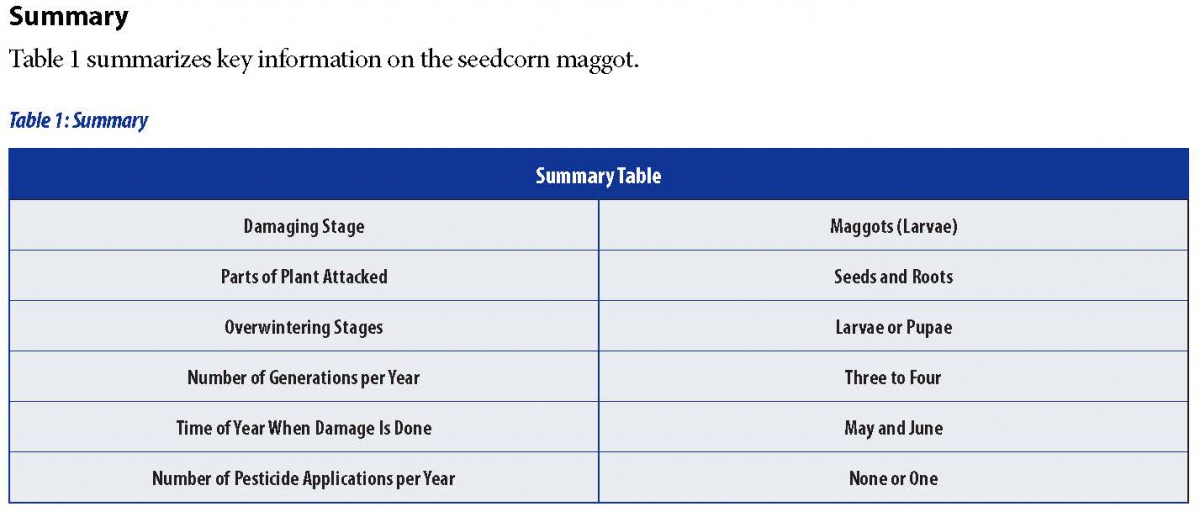The seedcorn maggot, Delia platura, was probably introduced from Europe in the mid-1800’s and is now widely distributed in the U.S. and Canada. This maggot mainly attacks the sprouting seeds of corn and beans, as well as a variety of other vegetables including peas, cabbage, turnips, onions, radishes, spinach, squash, pumpkins, and sprouting potatoes. This attack weakens plants and causes poor stands. Injury is most likely during cool moist springs in soil with high organic matter content, especially if manure was applied recently.


Whitney Cranshaw, Colorado State University.
Description
Adult flies are small (1/5” long), grayish-brown, and resemble houseflies and adults of other root-infesting maggots. Females lay their eggs in moist soil with abundant decaying vegetation. A fully grown maggot is yellowish-white, legless, and pointed towards the head. The pupal stage is spent inside a brown puparium (protective case) in the soil.
Life Cycle
This insect spends the winter as a larva in manure or decaying vegetation, or inside a capsule-like puparium. The adult flies emerge early in May, mate, and then females lay eggs. Newly hatched larvae may feed as scavengers, but eventually find germinating seeds or roots. They complete development in 2-3 weeks, pupate in the soil, and emerge as adults in 1-2 weeks. There are 3-4 generations per year, depending upon weather conditions.
Management
IPM Strategies:
- Cultural Practices - Preparing the land early in the season, not planting too deep, and not spreading manure in spring are all helpful practices in reducing seedcorn maggot problems. For soils with high organic matter content, delaying planting until soil is warmer and drier may help. For some crops and soils, setting transplants may be a better practice than direct seeding.
- Monitoring - Examine the soil by digging in areas where plants have failed to emerge. Check ungerminated seed for injury and presence of maggots.
- Chemical Control -The best insurance against the seedcorn maggot is treating seeds with insecticides and fungicides. Do not use insecticides alone, since a fungicide is needed to protect the treated seed against invasion by disease organisms.
Consult your county Agricultural Field Specialist for specific pesticide recommendations.
 Stop! Read the label on every pesticide container each time before using the material. Pesticides must be applied only as directed on the label to be in compliance with the law. All pesticides listed in this publication are contingent upon continued registration. Contact the Division of Pesticide Control at (603) 271-3550 to check registration status. Dispose of empty containers safely, according to New Hampshire regulations.
Stop! Read the label on every pesticide container each time before using the material. Pesticides must be applied only as directed on the label to be in compliance with the law. All pesticides listed in this publication are contingent upon continued registration. Contact the Division of Pesticide Control at (603) 271-3550 to check registration status. Dispose of empty containers safely, according to New Hampshire regulations.
Download the resource for the complete factsheet.

